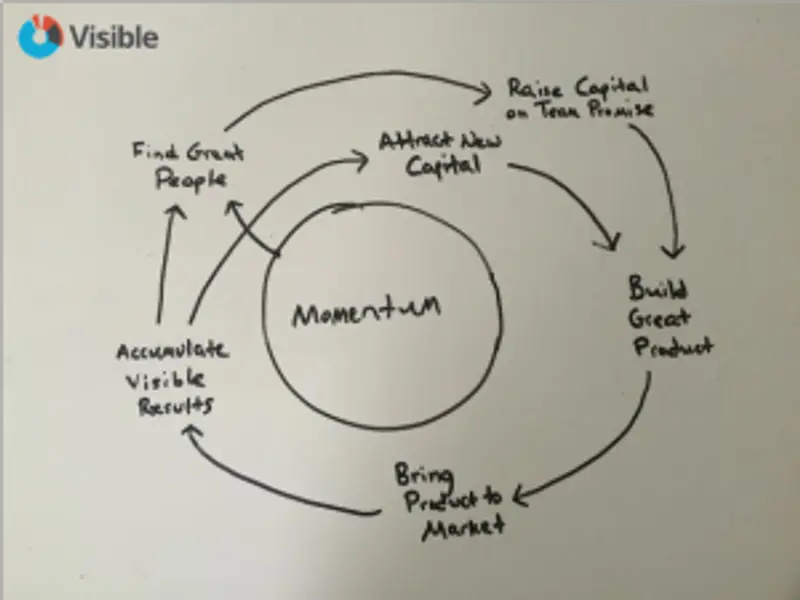
“ As a founder, there is no variable more important to manage adeptly than momentum” – Glenn Solomon, GGV
Settling on a single definition for “momentum” in an early stage business is difficult.
There is product momentum — delivering on the value proposition you promise to existing and potential customers time and time again.
There is team and hiring momentum — fostering a culture that effectively attracts and retains great people.
There is revenue momentum – building a predictable growth engine that targets the right segment of the market and packages your solution effectively over time.
There is fundraising momentum – regularly engaging with current and potential investors to gauge the market and lay the groundwork for future fundraising events.
All of these different momentum subsets contribute to the overall momentum (and long-term success) of a business. But how should a Founder prioritize these (and other types of) momentum? After all, if any of these processes lag for too long, the company is likely to fail.
The 1 Weird Momentum Trick!
Notice the words we used above to explain different types of momentum a CEO needs to manage:
“Time and time again…”
“Predictable growth engine…”
“Regularly engaging…”
All of these hint at the single best way to make sure you are successful managing your company’s momentum: Consistency.
Stakeholders – your team, your customers, your investors – need to know that you, as CEO, are doing something every single day to push the ball forward in each of those areas.
Leveraging Your Time to Build Momentum
Understanding that you should be trying to move the needle in each of these areas each day is the easy part. Now, where will the time to actually deliver on that commitment come from?
Trying to micromanage every process in your company is a recipe for disaster – you lose the trust of the your team (which you were trying to gain by touching every project) and the context switching saps you of energy and limits your effectiveness.
To most effectively leverage your time, think of the momentum management process like a flywheel:

We often talk on this blog about the two types of resources a business has – talent and capital. By focusing first and primarily on the attraction and retention of those two areas each day, you leverage the impact you can make on the momentum of your company. Great people build great products and bring them to market. Those results compound over time and become visible to new talent and capital. That new capital enables new growth strategies and more hiring and those new people step in to execute on the expanded mission. It is the virtuous cycle of startup momentum.




